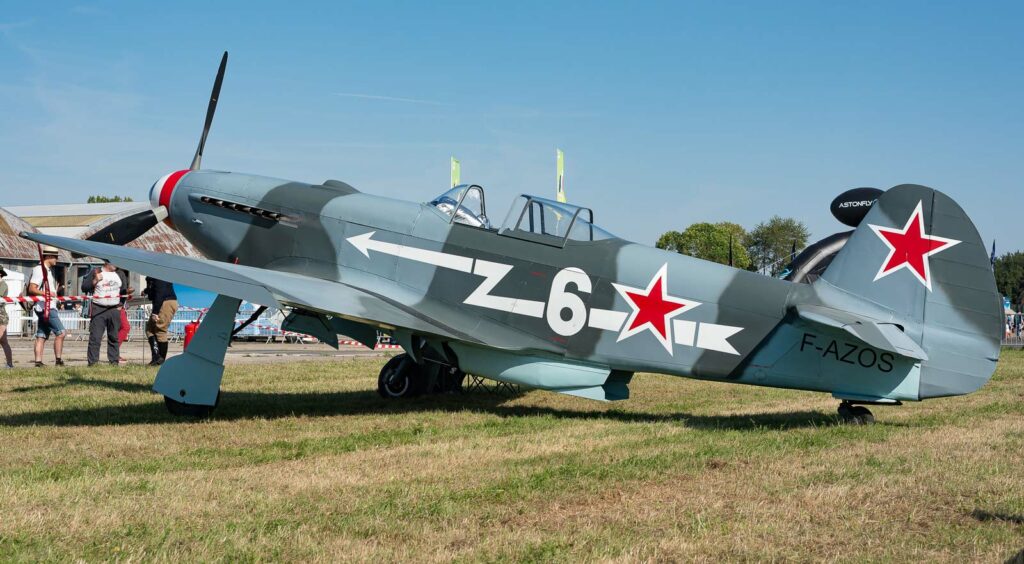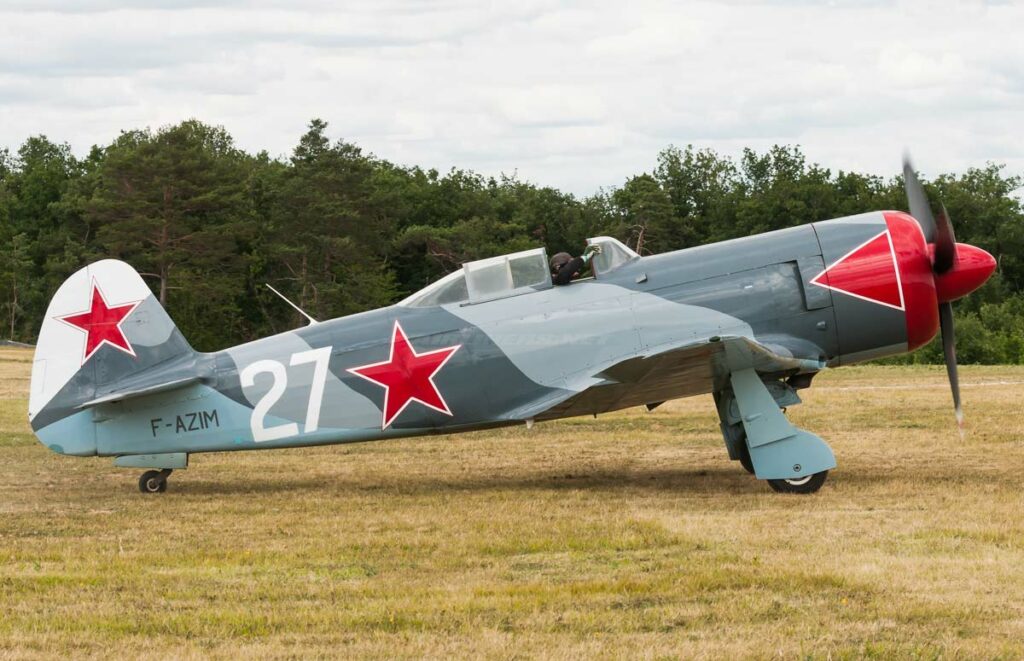The Yak-3, a high-performance Soviet WWII fighter, renowned for its agility, lightweight design, and robust Klimov VK-105 engine.
This article explores the Yakovlev Yak-3, a pivotal Soviet fighter of World War II. It traces the historical context and development goals, highlighting the need for a nimble, effective air combat fighter. The design section delves into its technical specifications and design philosophy. A comprehensive performance analysis compares the Yak-3 with contemporary fighters, emphasizing its exceptional agility and combat effectiveness. The military use and combat section examines its armament, operational roles, and impact in key WWII battles, followed by a summary of its operational legacy and influence on later aircraft designs.
The Yakovlev Yak-3 emerged as one of the most formidable Soviet fighters during World War II, playing a crucial role in the air battles on the Eastern Front.

History of the Development of the Yakovlev Yak-3:
The Yak-3’s development was rooted in the intense air combat of the Eastern Front during World War II. The Soviet Union required a fast, agile fighter capable of taking on the advanced German aircraft. Alexander Yakovlev, leading the design team, initiated the project to create a superior air combat fighter.
The program was launched to address the shortcomings of earlier Soviet fighters, focusing on improving agility, speed, and pilot visibility. The Yak-3 first flew on October 14, 1943. It did not have a NATO nickname as it was developed and operated before NATO’s establishment.
Design of the Yakovlev Yak-3:
The Yak-3 was an embodiment of simplicity and efficiency in fighter design. It had a wingspan of 9.2 meters (30 feet 2 inches) and a length of 8.5 meters (27 feet 10 inches). The aircraft was lightweight, with an empty weight of about 2,105 kilograms (4,641 pounds), contributing to its agility.
Powered by a Klimov VK-105PF2 V-12 liquid-cooled piston engine, producing around 1,300 horsepower, the Yak-3 was optimized for low to medium altitude combat. It featured a streamlined design, with a reduced wing area to increase speed and maneuverability.
However, the focus on agility and low-altitude performance limited its high-altitude capabilities and range. Moreover, the lightweight construction made it less robust than some of its contemporaries.
Performance of the Yakovlev Yak-3:
Performance-wise, the Yak-3 excelled in its intended role. It could reach a top speed of around 656 km/h (408 mph) and had a service ceiling of approximately 10,700 meters (35,105 feet). Its range was somewhat limited, at about 900 kilometers (559 miles).
When compared to German fighters like the Messerschmitt Bf 109 and the Focke-Wulf Fw 190, the Yak-3 was superior in maneuverability, especially at lower altitudes. Its climb rate and acceleration were also impressive, often giving it an edge in dogfights.

Military Use and Combat of the Yakovlev Yak-3:
The Yak-3 was heavily involved in the air battles of the Eastern Front. Its primary armament consisted of one 20 mm ShVAK cannon and two 12.7 mm UBS machine guns, making it a formidable adversary in air-to-air combat.
It played a pivotal role in gaining air superiority for the Soviet Union, particularly in the battles of Kursk and Operation Bagration. The Yak-3’s agility and speed made it a feared opponent among German pilots.
The Yak-3 competed effectively with contemporary German fighters. Its dominance in low to medium altitude dogfights was acknowledged by both Soviet and German pilots.
Post-war, the Yak-3 saw limited use in other countries, but its primary operator remained the Soviet Union. It was eventually phased out and replaced by jet fighters in the late 1940s and early 1950s.
The Yakovlev Yak-3 stands as one of the most effective and influential fighters of World War II. Its design philosophy prioritizing agility and simplicity set a standard for Soviet fighter aircraft and influenced future designs. Although it had limitations in range and high-altitude performance, its prowess in air combat ensured its place in the annals of military aviation history. The Yak-3’s legacy continues to be celebrated for its significant contribution to the Soviet war effort on the Eastern Front.
Back to the Warbirds section.